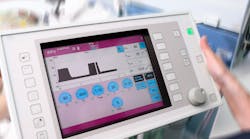Years of research and development go into designing new medical devices, from conducting rigorous clinical studies to testing the product and earning FDA approval. Yet one fundamental aspect of bringing a new product to market is often overlooked by medical device manufacturers—the process of ensuring that the product effectively and efficiently gets into hospital inventory and supply chain systems.
Failure to correctly enter a new product into the hospital’s item-master system—the database the hospital uses for purchasing and visibility in its supply chain—can cause profitability delays of up to six months.
Despite the lack of a standard industry process to address this issue, there are actions medical-device manufacturers can take to ensure the product is entered into the item-master system.
Let’s start with the planning phase.
From an external perspective, it’s important for a medical-device manufacturer to forge a relationship with the hospital’s Value Analysis Committee, a team usually comprised of clinicians and representatives from the supply chain. Since a clinician is typically responsible for submitting a request for a new product and the Value Analysis Committee makes the decision, it’s a good idea to connect with this team well in advance of the product launch to ensure the purchasing department has the necessary product specs and other information to enter the product successfully into the system.
Also in the planning phase, recognize and prepare to address potential issues that can delay a product from getting into the item master. These delays can include manual processes with room for error, internal approvals, pricing verification, ensuring the product’s written description meets the hospital’s requirements and verifying the product is accurately coded for insurance reimbursement and the hospital’s invoices. To help mitigate these potential roadblocks, explore what processes the hospital has in place and factor them into the timing and planning of the rollout.
Liftoff to Launch
Just as clinical trials require a high level of vigilance, a great deal of rigor should also be applied to the product’s delivery and immediate revenue recognition. When an item master has 80,000-100,000 SKUs, ensuring a new product stands out is challenging.
Product rollouts are driven by what marketing calls the “four Ps”: product, price, place and promotion. As a launch date gets closer, medical-device manufacturers are often skewed toward the promotion aspect of a product rollout. However, balancing the four Ps and putting equal emphasis on “placement,” allows the manufacturers to gain insight into hospitals and their degree of automation for managing item master data. This insight helps the MDM plan accordingly, including establishing processes to help ensure the accuracy and efficacy of adding the new product to the item master.
Following approval to add a new product and establishing contract pricing, it is critical to ensure a new product is accurately added to an item master in time for launch. This involves the set-up of the item and contracts in both the supply chain and clinical systems. This process can take days, several weeks or even months depending on the availability of the required data elements and a hospital’s internal processes. These requirements and related time span underscore the need for having supply chain and M&A experts on the launch team.
Introducing new medical products is a complex and costly effort. As medical device manufacturrers look to maximize their investments in R&D and bring new products to market, they need to achieve ROI as quickly as possible. Unnecessary delays can be avoided by having the right team and automation processes in place.
Denise Odenkirk is vice president, supplier sales, Global Healthcare Exchange (GHX).




